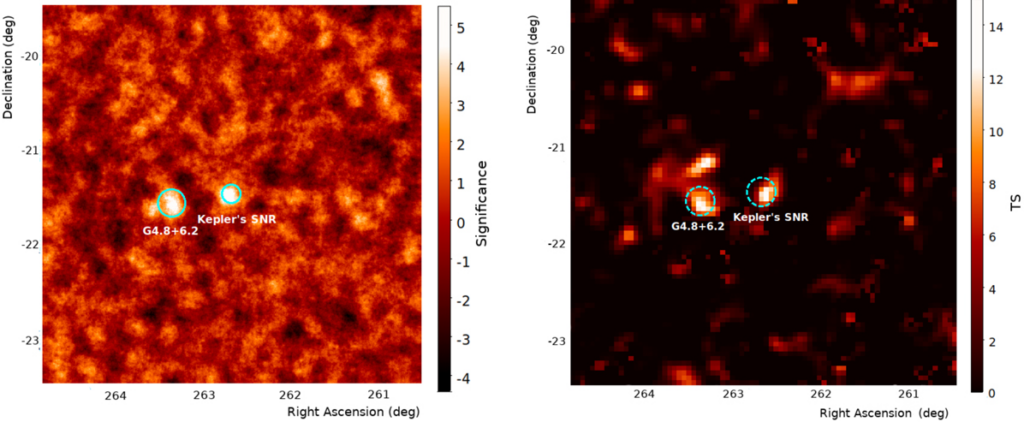Observations with imaging atmospheric Cherenkov telescopes (IACTs) have enhanced our knowledge of nearby supernova (SN) remnants with ages younger than 500 yr by establishing Cassiopeia A and the remnant of Tycho’s SN as very-high-energy (VHE) γ-ray sources. The remnant of Kepler’s SN, which is the product of the most recent naked-eye SN in our Galaxy, is comparable in age to the other two, but is significantly more distant. If the γ-ray luminosities of the remnants of Tycho’s and Kepler’s SNe are similar, then the latter is expected to be one of the faintest γ-ray sources within reach of the current generation IACT arrays. Here we report evidence at a statistical level of 4.6σ for a VHE signal from the remnant of Kepler’s SN based on deep observations by the High Energy Stereoscopic System (H.E.S.S.) with an exposure of 152 h. The measured integral flux above an energy of 226 GeV is ∼0.3% of the flux of the Crab Nebula. The spectral energy distribution (SED) reveals a γ-ray emitting component connecting the VHE emission observed with H.E.S.S. to the emission observed at GeV energies with Fermi-LAT. The overall SED is similar to that of the remnant of Tycho’s SN, possibly indicating the same nonthermal emission processes acting in both these young remnants of thermonuclear SNe.

Full Article:
H. E. S. S. Collaboration, Aharonian, F., Ait Benkhali, F., Angüner, O., et al. (2022). Evidence for γ-ray emission from the remnant of Kepler’s supernova based on deep H.E.S.S. observations. Astronomy and Astrophysics, 662, doi: 10.1051/0004-6361/202243096
License: CC BY 4.0





